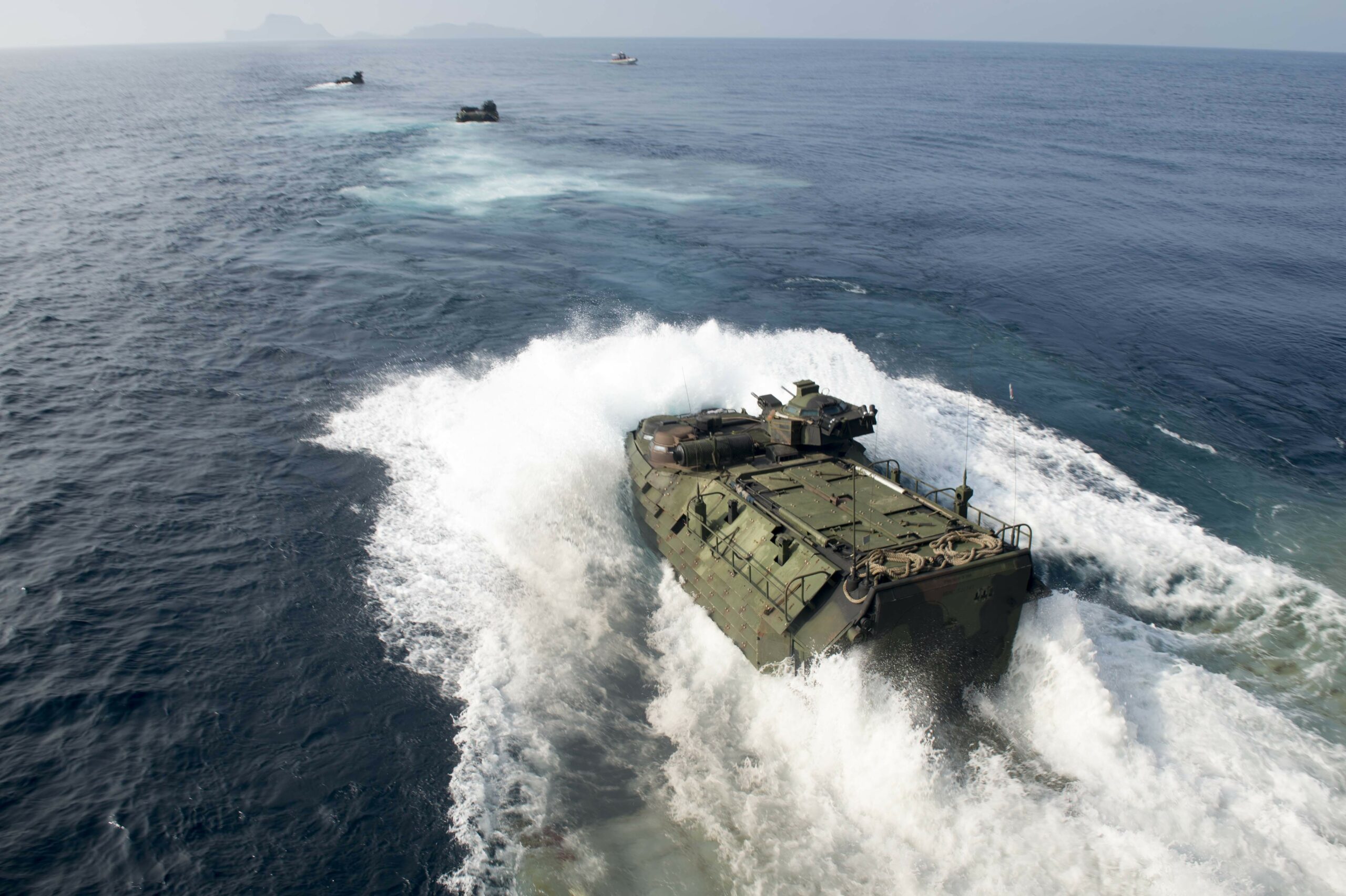Civilization
We Need a Real Marine Corps To Fight a Two Front War
The United States Marine Corps has suffered from bad decisions (like the Force Design plan) and needs rebuilding for a two-front war.

The term “axis of evil” (AOE) originally coined by President George W Bush in response to the attacks on September 11th, 2001, included adversarial foreign governments that sponsored terrorism and sought weapons of mass destruction, namely Iran, Iraq, and North Korea. Certainly not a Warsaw Pact-like organization. However, today’s axis of evil may come closer to threatening the U.S. with a multi-front war, a war we are not ready for.
The Marine Corps was once the key to two-front capability
The new AOE, if it exists, consists of China, Iran, North Korea, and Russia. US intelligence suggests there are plans afoot to coordinate any Chinese attack against Taiwan, East China Sea or South China Sea with military action elsewhere. The most likely candidate is Iran. Russia is otherwise engaged, and North Koreas is not ready to engage in a major regional conflict (MRC),
Until 2019, the United States was reasonably well positioned to wage a two-front war, The theory was win-hold-win, Win in the major theater (in this case China). Hold in the secondary theater (Iran here); then win in MRC 2.
The key to the two MRC strategy was the United States Marine Corps. The Marine Corps had several capabilities vital to the second MRC.
The Marine Corps previously had a rapid reaction air-alert capability that could put a light infantry force on the ground within twenty-four hours. This, combined with army light infantry, (82d Airborne, 101st Air Assault, and 10th Mountain divisions). These elements would act as a tripwire to discourage the adversary from crossing the line of departure or as a blocking force on the brink of hostilities.
The Marine Expeditionary Unit
The real Marine Corps contribution would come with the arrival of a Marine Corps Expeditionary Unit with a small, but potent combined arms team replete with armor, artillery, aviation, and assault engineers. In the Iran example it would be the MEU stationed 24/7 in the Persian Gulf/Indian Ocean region. Next would come a full combined arms capability in the form of a Maritime Pre-positioned Marine Expeditionary Brigade (MPS) with a full complement of tanks, artillery, combat aircraft, and assault engineers.
In the Iranian case (second MRC), the MPS set stationed at Diego Garcia in the Indian Ocean would be used. As needed, the other two MPS sets could be added to make up a full division/ air wing/ logistics team or corps- sized Marine Expeditionary force. If needed additional divisions, and air wings could reinforce the MEF as needed. This was exactly what happened in Desert Shield/Storm and Iraqi Freedom, but that capability no longer exists.
Inexplicably, starting in 2019, the Marine Corps transformed itself from a robust combined arms team into a combination of light infantry and coastal artillery.
Even if the Marine Corps had retained the combat capabilities lost through divestment, it would have been crippled by the failure of the Navy’s amphibious shipbuilding deals made for the Marine Corps.
The Force Design concept
These divestments were made to allow the Marine Corps to implement its poorly conceived first island chain, China-centric Force Design concept that has the Corps buying anti-ship missiles for use in a blue water fight that will likely never happen.
Most naval and geopolitical experts are appalled by the concept and the resulting loss of combined arms capabilities. A recent report by the Center for Naval Analysis (CNA) bemoans the loss of that combined arms combat power. This is particularly disturbing because CNA is the FFRDC* think tank designated to support the Marine Corps.
Like the retired general officers who generally advise the senior active leadership, CNA was apparently cut out of the process. Wargaming supporting Force Design minimized the lack of logistical support and the viability of platforms such as the landing ship medium. MCCDC (Marine Corps Combat Development Command), responsible for the development of future operational concepts was also absent from Force Design planning.
The Former Commandant and his team that rushed Force Design into development overlooked or willfully disregarded the nation’s capability to fight and win two MRCs. Legendary Marine Corps hero “Chesty Puller” was fond of saying that “the road to Hell is paved with the good intentions of Second Lieutenants,” now the same can probably be said for Four Star Generals.
* FFRDC – Federally funded research and development center.
This article was originally published by RealClearDefense and made available via RealClearWire.
Gary Anderson lectures on Alternative Analysis at George Washington University's Elliott School of International Affairs. He served as a Special Advisor to the Deputy Secretary of Defense
-

 Civilization3 days ago
Civilization3 days agoDC Pipe Bomb Arrest Raises Questions About Christopher’s Wray’s FBI
-

 Civilization4 days ago
Civilization4 days agoThe Legal Logic Behind U.S. Operations Against Narco-Terrorist Networks
-

 Executive4 days ago
Executive4 days agoNewsom’s ‘National Model’ for Homeless Wracked by Fraud
-

 Executive3 days ago
Executive3 days agoWhen You’re in a Hole, Stop Digging
-

 Education3 days ago
Education3 days agoWaste of the Day: Taxpayers Subsidize Football Coach Severance
-

 Executive2 days ago
Executive2 days agoWaste of the Day: Obamacare Failed Test, Approved Fraudulent Subsidies
-

 Civilization2 days ago
Civilization2 days agoPence Calls on Trump To Fire RFK Jr Over Abortion Drug
-

 Executive4 days ago
Executive4 days agoWaste of the Day: Feds Pay Nonprofits That Sue the Government











